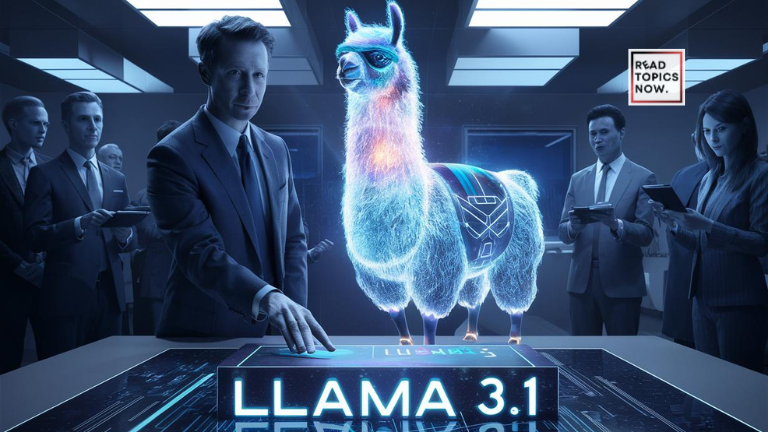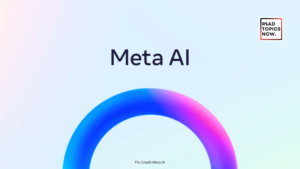
Meta Unveils Llama 3.1, Its Most Advanced Open-Source AI Model

Meta Unveils Llama 3.1. Open-Source AI Model
Introduction
As Big Tech’s A.I. race heats up, Meta (META) is striking out on its own path. The social media giant yesterday (July 23) released Llama 3.1 405B, which it says is the largest-ever open-source A.I. model to rival the capabilities of competitors like OpenAI’s GPT-4o and Anthropic’s Claude 3.5 Sonnet. Unlike closed A.I. systems, which are favored by major tech players like OpenAI, Anthropic, and Google, open-source A.I. models can be used and downloaded at no cost. Meta has long emphasized an open-source approach toward its projects, claiming such technology should be shared.

Meta’s Commitment to Open-Source A.I.
Meta CEO Mark Zuckerberg has been a vocal advocate for open-source technology. In his blog post announcing Llama 3.1, he stated, “Open source will ensure that more people around the world have access to the benefits and opportunities of A.I., that power isn’t concentrated in the hands of a small number of companies, and that the technology can be deployed more evenly and safely across society.”
Overview of Llama 3.1 405B
Llama 3.1 405B will power Meta AI, Meta’s chatbot featured across its apps. The model has enhanced reasoning capabilities, support for several new languages, and features like an “Imagine me” prompt that generates customized images. Trained with more than 16,000 Nvidia (NVDA) graphics processing units (GPUs) and boasting 405 billion parameters, Llama 3.1 405B is Meta’s largest A.I. model thus far and was released alongside two smaller versions of the Llama 3.1 model.
Read: Elon Musk, Mark Zukerberg, Sundar Pichai On AGI (Artificial General Intelligence)
Capabilities of Llama 3.1 405B
The new model displays superior capabilities across numerous long-context benchmarks compared to GPT-4o and Claude 3.5 Sonnet. It contains higher capabilities in math, reasoning, and tool use. The “Imagine me” feature is a standout addition, allowing users to generate customized images based on text prompts, a function that holds great potential for creative applications.
Training and Development
The development of Llama 3.1 405B was an immense undertaking. The model was trained using over 16,000 Nvidia GPUs, which facilitated the processing of vast amounts of data. With 405 billion parameters, it represents a significant leap forward from previous versions of the Llama model.
Read : Understanding OpenAI SORA and its impact on various industries
Comparison with Previous Llama Models
While Meta has released open-source A.I. models in the past, Llama 3.1 405B is positioned as the first to truly match rival products. Previous models laid the groundwork, but the latest version incorporates substantial improvements in reasoning, language support, and image generation.
Benchmark Performance
In long-context benchmarks, Llama 3.1 405B has shown superior performance. It excels in tasks requiring extensive context understanding and demonstrates advanced capabilities in math and reasoning, surpassing even the most advanced models from competitors.
Industry Reactions
Meta’s release and Zuckerberg’s cry for open-source A.I. drew praise from leaders across the tech industry. “This is the way,” tweeted Twitter founder Jack Dorsey. Aravind Srinivas, CEO of A.I. startup Perplexity, described Zuckerberg’s open-source argument as “well articulated,” while Andrej Karpathy, a former OpenAI and Tesla (TSLA) researcher, congratulated Meta on the launch. Even Elon Musk, who has long clashed with Zuckerberg, described the initiative as “impressive” and noted that Zuckerberg “does deserve credit for open-sourcing.”
Potential of Open-Source A.I.
Open-source A.I. offers numerous benefits and opportunities. By making advanced A.I. models accessible to a broader audience, Meta aims to democratize A.I. technology. This approach can spur innovation, as developers and startups can build on top of existing models to create new applications and services.
Future of Llama Models
Zuckerberg expects future Llama models to become the most advanced in the industry by 2025. With its open-source approach, Meta hopes its A.I. model will become the foundation of other A.I. ventures pursued by companies and startups across the industry. The company plans to work with partners like Nvidia, Amazon (AMZN), and Databricks to help developers fine-tune and distill new versions of Llama 3.1.
Meta’s Partnerships
Meta’s collaboration with Nvidia, Amazon, and Databricks highlights the company’s commitment to advancing A.I. technology. These partnerships are crucial for providing the necessary infrastructure and support for developers working with Llama 3.1.
Implications for the A.I. Industry
The release of Llama 3.1 405B has significant implications for the A.I. industry. By offering a powerful, open-source model, Meta is challenging the dominance of closed A.I. systems. This move could lead to a more competitive and innovative landscape, benefiting consumers and developers alike.
Security Concerns
Some of the most significant criticisms against open-source A.I. concern bad actors’ potential to use the technology to create harm. While Zuckerberg conceded that this may occur in the future, he noted that open-source software can also help safeguard against such risks. “I think it will be better to live in a world where A.I. is widely deployed so that larger actors can check the power of smaller bad actors,” he said. “As long as everyone has access to similar generations of models—which open source promotes—then governments and institutions with more compute resources will be able to check bad actors with less compute.”
Mark Zuckerberg’s Vision
Zuckerberg’s vision for open-source A.I. is one of inclusivity and shared progress. By promoting an open-source approach, he aims to ensure that A.I. technology is accessible to all and can be used to address a wide range of societal challenges. His commitment to this vision is evident in Meta’s ongoing efforts to advance open-source A.I. models.
Conclusion
Meta’s release of Llama 3.1 405B marks a significant milestone in the A.I. industry. As the largest-ever open-source A.I. model, it offers powerful capabilities and a promising future for developers and companies alike. While there are challenges and risks associated with open-source A.I., the potential
FAQs
1. What makes Llama 3.1 405B different from previous Llama models?
Llama 3.1 405B is significantly more powerful, with enhanced reasoning capabilities, new language support, and an innovative “Imagine me” feature for generating customized images.
2. How does Llama 3.1 405B compare to other A.I. models like GPT-4o and Claude 3.5 Sonnet?
Llama 3.1 405B outperforms these models in long-context benchmarks and has superior capabilities in math, reasoning, and tool use.
3. What are the benefits of open-source A.I.?
Open-source A.I. democratizes access to advanced technology, fosters innovation, and allows for broader deployment of A.I. applications, potentially leading to more equitable and safe use.
4. What are the security concerns with open-source A.I.?
There are risks that bad actors could misuse the technology. However, open-source A.I. also allows for greater oversight and the ability for larger institutions to counteract potential misuse.
5. What are Meta’s future plans for the Llama models?
Meta aims to develop even more advanced Llama models by 2025, continuing its open-source approach and collaborating with partners like Nvidia, Amazon, and Databricks to support further innovation.
Get Curated Post Updates!
Sign up for my newsletter to see new photos, tips, and blog posts.






